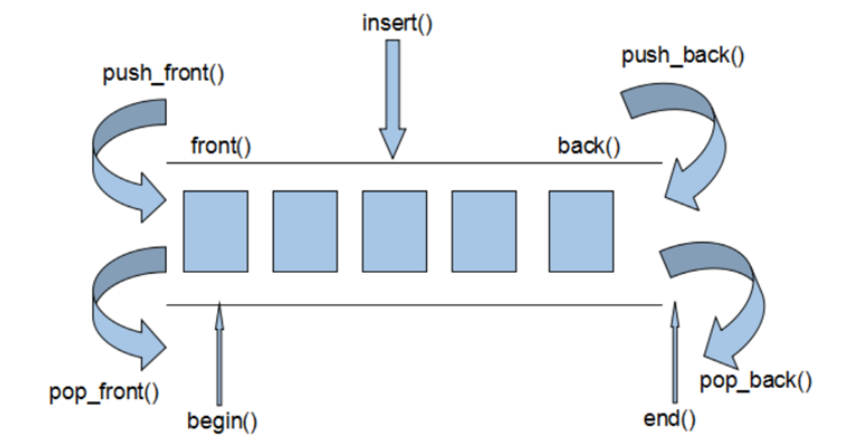文章目录
- 🌟前言
- 🌟URL
- 🌟URL组成部分
- 🌟URL 类
- 🌟url.href
- 🌟url.pathname
- 🌟url.port
- 🌟url.protocol
- 🌟url.search
- 🌟url.searchParams
- 🌟url.hash
- 🌟url.host
- 🌟url.hostname
- 🌟参考
- 🌟写在最后

🌟前言
哈喽小伙伴们,新的专栏 Node 已开启;这个专栏里边会收录一些Node的基础知识和项目实战,今天带领大家初识一下 Node.js中的Global全局对象 之 URL让我们一起来看看吧🤘
🌟URL
在我们开发Web应用时,经常需要处理URL,Nodejs给我们提供了URL类来处理URL。
注意:因为
node.js的url.parse方法采用的传统的urlObject,不符合URL现存标准-WHATWG URL API,因此弃用了。同时url.format(),url.resolve()也弃用了。官方推荐使用URL类。
🌟URL组成部分
WHATWG网址的origin属性包括protocol和host,但不包括username或password。
┌────────────────────────────────────────────────────────────────────────────────────────────────┐
│ href │
├──────────┬──┬─────────────────────┬────────────────────────┬───────────────────────────┬───────┤
│ protocol │ │ auth │ host │ path │ hash │
│ │ │ ├─────────────────┬──────┼──────────┬────────────────┤ │
│ │ │ │ hostname │ port │ pathname │ search │ │
│ │ │ │ │ │ ├─┬──────────────┤ │
│ │ │ │ │ │ │ │ query │ │
" https: // user : pass @ sub.example.com : 8080 /p/a/t/h ? query=string #hash "
│ │ │ │ │ hostname │ port │ │ │ │
│ │ │ │ ├─────────────────┴──────┤ │ │ │
│ protocol │ │ username │ password │ host │ │ │ │
├──────────┴──┼──────────┴──────────┼────────────────────────┤ │ │ │
│ origin │ │ origin │ pathname │ search │ hash │
├─────────────┴─────────────────────┴────────────────────────┴──────────┴────────────────┴───────┤
│ href │
└────────────────────────────────────────────────────────────────────────────────────────────────┘
对于一个 URL 字符串,其组成部分会有所有不同,其中有些部分只有在URL字符串中存在时,对应字段才会出现在解析后对象中。以下是一个 URL 例子:
http://user:pass@host.com:8080/p/a/t/h?query=string#hash
解析后对象字段如下:
| 参数 | 描述 | 示例 |
|---|---|---|
| href | 解析前的完整原始 URL,协议名和主机名已转为小写 | http://user:pass@host.com:8080/p/a/t/h?query=string#hash |
| protocol | 请求协议,小写 | http: |
| slashes | 协议的":“号后是否有”/" | true or false |
| host | URL主机名,包括端口信息,小写 | ‘host.com:8080’ |
| auth | URL中的认证信息 | ‘user:pass’ |
| hostname | 主机名,小写 | ‘host.com’ |
| port | 主机的端口号 | ‘8080’ |
| pathname | URL中路径 | ‘/p/a/t/h’ |
| search | 查询对象,即:queryString,包括之前的问号“?” | ‘?query=string’ |
| path | pathname 和 search的合集 | ‘/p/a/t/h?query=string’ |
| query | 查询字符串中的参数部分(问号后面部分字符串) | ‘query=string’ or {‘query’:‘string’} |
| hash | 锚点部分(即:“#”及其后的部分) | ‘#hash’ |
🌟URL 类
new URL(input[, base])
| 参数 | 类型 | 描述 |
|---|---|---|
| input | <string> | 要解析的绝对或相对的输入网址。 如果 input 是相对的,则需要 base。 如果 input 是绝对的,则忽略 base。 |
| base | <string> /<URL> | 如果 input 不是绝对的,则为要解析的基本网址。 |
网址构造函数可作为全局对象的属性访问。 也可以从内置的 url 模块中导入:
import { URL } from 'url';
console.log(URL === globalThis.URL); // 打印 'true'.
🌟url.href
获取和设置序列化的网址。
const myURL = new URL('https://example.org/foo');
console.log(myURL.href);
// 打印 https://example.org/foo
myURL.href = 'https://example.com/bar';
console.log(myURL.href);
// 打印 https://example.com/bar
🌟url.pathname
获取和设置网址的路径部分。
const myURL = new URL('https://example.org/abc/xyz?123');
console.log(myURL.pathname);
// 打印 /abc/xyz
myURL.pathname = '/abcdef';
console.log(myURL.href);
// 打印 https://example.org/abcdef?123
🌟url.port
获取和设置网址的端口部分。
端口值可以是数字,也可以是包含 0 到 65535(含)范围内的数字的字符串。 将值设置为给定 protocol 的 URL 对象的默认端口将导致 port 值成为空字符串 ('')。
const myURL = new URL('https://example.org:8888');
console.log(myURL.port);
// 打印 8888
// 默认端口自动转换为空字符串
//(HTTPS 协议的默认端口是 443)
myURL.port = '443';
console.log(myURL.port);
// 打印空字符串
console.log(myURL.href);
// 打印 https://example.org/
myURL.port = 1234;
console.log(myURL.port);
// 打印 1234
console.log(myURL.href);
// 打印 https://example.org:1234/
// 完全无效的端口字符串被忽略
myURL.port = 'abcd';
console.log(myURL.port);
// 打印 1234
// 前导数字被视为端口号
myURL.port = '5678abcd';
console.log(myURL.port);
// 打印 5678
// 非整数被截断
myURL.port = 1234.5678;
console.log(myURL.port);
// 打印 1234
// 未用科学计数法表示的超出范围的数字将被忽略。
myURL.port = 1e10; // 10000000000,将按如下所述进行范围检查
console.log(myURL.port);
// 打印 1234
🌟url.protocol
获取和设置网址的协议部分。
const myURL = new URL('https://example.org');
console.log(myURL.protocol);
// 打印 https:
myURL.protocol = 'ftp';
console.log(myURL.href);
// 打印 ftp://example.org/
🌟url.search
获取和设置网址的序列化的查询部分。
const myURL = new URL('https://example.org/abc?123');
console.log(myURL.search);
// 打印 ?123
myURL.search = 'abc=xyz';
console.log(myURL.href);
// 打印 https://example.org/abc?abc=xyz
🌟url.searchParams
获取表示网址查询参数的
URLSearchParams对象。
const myURL = new URL('https://example.org/?abc=123');
// 获取查询字符串abc
console.log(myURL.searchParams.get('abc'));
// 打印 123
// 添加查询参数 abc 值为 xyz
myURL.searchParams.append('abc', 'xyz');
console.log(myURL.href);
// 打印 https://example.org/?abc=123&abc=xyz
// 删除查询参数 abc
myURL.searchParams.delete('abc');
// 修改查询参数 a 值为b
myURL.searchParams.set('a', 'b');
console.log(myURL.href);
// 打印 https://example.org/?a=b
URLSearchParams API 提供对 URL 查询的读写访问。 URLSearchParams 类也可以与以下四个构造函数之一单独使用。 URLSearchParams 类也在全局对象上可用。
WHATWG URLSearchParams 接口和 querystring 模块具有相似的用途,但 querystring 模块的用途更通用,因为它允许自定义的分隔符(& 和 =)。 换句话说,此 API 纯粹是为网址查询字符串而设计。
const newSearchParams = new URLSearchParams(myURL.searchParams);
// 以上相当于
// const newSearchParams = new URLSearchParams(myURL.search);
newSearchParams.append('a', 'c');
console.log(myURL.href);
// 打印 https://example.org/?a=b
console.log(newSearchParams.toString());
// 打印 a=b&a=c
// newSearchParams.toString() 是隐式调用的
myURL.search = newSearchParams;
console.log(myURL.href);
// 打印 https://example.org/?a=b&a=c
newSearchParams.delete('a');
console.log(myURL.href);
// 打印 https://example.org/?a=b&a=c
🌟url.hash
获取和设置网址的片段部分。
const myURL = new URL('https://example.org/foo#bar');
console.log(myURL.hash);
// 打印 #bar
myURL.hash = 'baz';
console.log(myURL.href);
// 打印 https://example.org/foo#baz
🌟url.host
获取和设置网址的主机部分。
const myURL = new URL('https://example.org:81/foo');
console.log(myURL.host);
// 打印 example.org:81
myURL.host = 'example.com:82';
console.log(myURL.href);
// 打印 https://example.com:82/foo
🌟url.hostname
获取和设置网址的主机名部分。
url.host和url.hostname之间的主要区别在于url.hostname不包括端口。
const myURL = new URL('https://example.org:81/foo');
console.log(myURL.hostname);
// 打印 example.org
// 设置主机名不会改变端口
myURL.hostname = 'example.com:82';
console.log(myURL.href);
// 打印 https://example.com:81/foo
// 使用 myURL.host 更改主机名和端口
myURL.host = 'example.org:82';
console.log(myURL.href);
// 打印 https://example.org:82/foo
🌟参考
【参考】Nodejs官方文档 url网址
WHATWG:网页超文本应用技术工作小组是一个以推动网络HTML 5标准为目的而成立的组织。在2004年,由Opera、Mozilla基金会和苹果这些浏览器厂商组成。
🌟写在最后
更多Node知识以及API请大家持续关注,尽请期待。各位小伙伴让我们 let’s be prepared at all times!
✨原创不易,还希望各位大佬支持一下!
👍 点赞,你的认可是我创作的动力!
⭐️ 收藏,你的青睐是我努力的方向!
✏️ 评论,你的意见是我进步的财富!



















